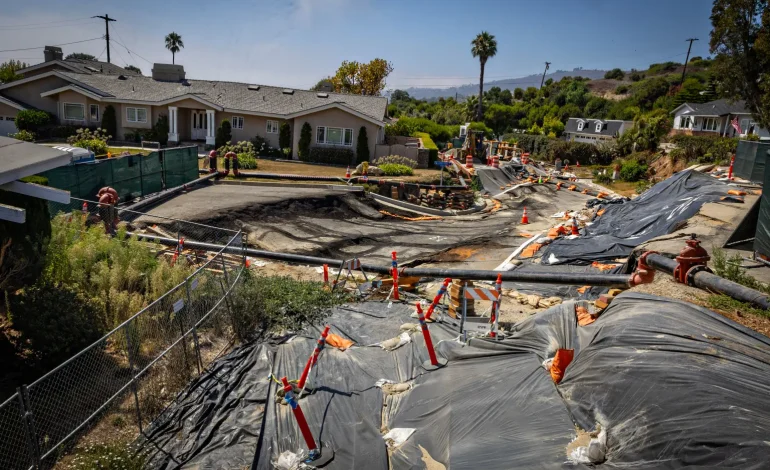California Community Faces Growing Landslide Threat as Terrain Shifts Toward the Ocean

A growing landslide threat has emerged in the Palos Verdes Peninsula, a coastal region just south of Los Angeles, with NASA’s radar data revealing alarming shifts in the area’s terrain.
The region, known for its history of landslides, is now experiencing significant movement that is threatening hundreds of structures and could have long-term implications for local residents and infrastructure.
According to data from NASA’s Jet Propulsion Laboratory (JPL), the Palos Verdes Peninsula shifted by as much as 4 inches per week in 2024, particularly after heavy rainfall from storms including the remnants of Hurricane Hilary in the summer of 2023. The increasing movement has raised concerns, with some areas experiencing accelerated shifts due to record rainfall and continued precipitation into early 2024.
NASA’s advanced radar system, including its Uninhabited Aerial Vehicle Synthetic Aperture Radar (UAVSAR), has been crucial in monitoring the land’s movement. Through a series of radar passes, scientists were able to create detailed visualizations of the affected region, showing the rate and direction of the soil shift. These findings indicate that the landslides have not only expanded but accelerated in recent months, posing an ongoing risk to human life and infrastructure.
“While landslides have been a known issue in the region for decades, the rapid expansion and acceleration of the current slide is a concerning development,” said Alexander Handwerger, a JPL landslide scientist. “The speed at which the land is moving is more than enough to put both lives and property at risk.”
The landslide’s impact has already been felt in several neighborhoods, including San Pedro, Rolling Hills Estates, and Rancho Palos Verdes. In some areas, homes have been split in two, and some residents have left, fearing further damage. A state of emergency was declared in 2024 following the extensive rainfalls, and ongoing monitoring and emergency response measures are in place.
Scientists are exploring the long-term risks of this shifting terrain. Many of the landslides in the area have been ongoing for decades, but the most recent events were exacerbated by significant weather events. The Palos Verdes Peninsula itself sits on an ancient complex of landslides that have been moving slowly over the past 60 years, but the rate of movement in 2024 has raised alarm.
In response to the growing threat, the City of Rancho Palos Verdes has teamed up with the Federal Emergency Management Agency (FEMA) and the California Governor’s Office of Emergency Services to launch a $42 million buyout program for affected homeowners. These efforts aim to help mitigate the damage and offer a solution to those who may be forced to leave their homes.
Despite recent efforts, experts caution that the landslide threat remains significant. NASA is continuing to monitor the region using both airborne radar and satellite data to provide timely updates to state officials, supporting their response efforts. The situation highlights the vulnerability of coastal communities to natural hazards such as landslides, especially in the context of extreme weather patterns driven by climate change.
With input from New York Post and ABC News.







